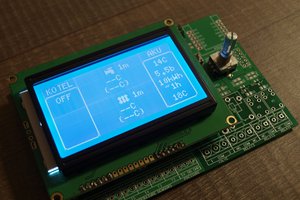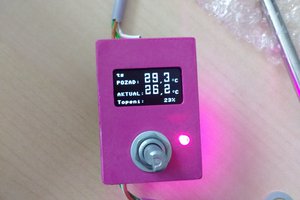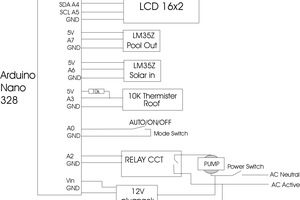The controller had these requirements:
- 24V to 5V and 3.3V regulator
- Interface for the original Balboa display
- 8 relay outputs
- Main (power to the other relays, should one stick then this relay can turn everything off)
- Heater
- Circulation Pump
- Jet Pump 1 - Low
- Jet Pump 1 - High
- Jet Pump 2
- Blower
- Ozone generator
- I2C output
- 1-Wire output
- NTC interface for the original water temperature sensor
- NTC interface for the original heater temperature sensor with a hardware fail-safe
- 6 inputs for use with regular (waterproof) pushbuttons to control the hot tub settings
- Temperature Up
- Temperature Down
- Jet Pump 1
- Jet Pump 2
- Blower
- Lighting
After some design iterations, the board containts these elements:
- WeMos compatible pin sockets (I used the WeMos D1 Mini Pro for having an external antenna connector)
- TPS54308 regulator for converting the 24V to 5V
- MCP1700 for converting 5V to 3.3V so I didn't have to use the WeMos 3.3V regulator
- Balboa display interface for talking to the original display (mileage may vary on newer models)
- Connected to the WeMos I/O for minimal overhead when polling the display
- RJ-45 connector so the original cable can be used to plug in the display
- More information on the display protocol can be found in the documents folder of the github repo.
- Onboard 1-Wire DS18B20 temperature sensor
- TXS0101 as a 1-Wire buffer for connecting external 1-Wire sensors
- I2C buffer for maybe one day connecting a homebrew display if the current one quits.
- Could also be used to interface with external addons like a pH sensor.
- NTC thermistor interface (simple series resistor with opamp buffer)
- For use of the original Balboa NTC water temperature sensor
- Connected to the WeMos ADC
- Another NTC thermistor interface with latching comparator as a hardware fail-safe
- For use of the original Balboa NTC heater temperature sensor
- The trigger threshold can be controlled with a potmeter
- It will reset the I/O expander causing all relays to be de-energized
- MCP23017 I2C I/O expander.
- Driving relays through a ULN2803A darlington transistor array
- Driving a high current Mosfet for controlling the lighting
- Sampling button inputs for controlling the hot tub settings with simple buttons
- Sampling the filter loop pressure sensor
- Everything is routed to terminal blocks to be housed in a din rail enclosure.
The firmware is my first try in using C++ in embedded code, so you might see some weird approaches.
Feel free to give suggestions. Some features:
- Software only Balboa display controller class
- Hot tub class controlling all the hot tub elements
- Heating (simple on-off control for now, no pid, but working very well)
- Filter cycles (pre-programmed by specifying time window, frequency and length)
- Flush cycles (also pre-programmed)
- Auto-off of blower and jet pumps after a pre-programmed time
- Continuous error checking using the water temperature sensor and pressure sensor
- Time synchronization using NTP.
- Commands and status using MQTT.
- Serial console for debug.
 NickB
NickB




 Jiří Praus
Jiří Praus
 Robert
Robert

 BrendanMatkin
BrendanMatkin
Hello, the whole project has turned out great, a very good job. I'm interested in getting a board. I have been going through the entire project to order the necessary components. Is the github pcb fixed for bugs? I can't find information about diodes D3 and D4 in the boom. Could you tell me what characteristics these components have? I would really appreciate it. Right now I have my spa half working, and I have the opportunity to update with this very interesting project.